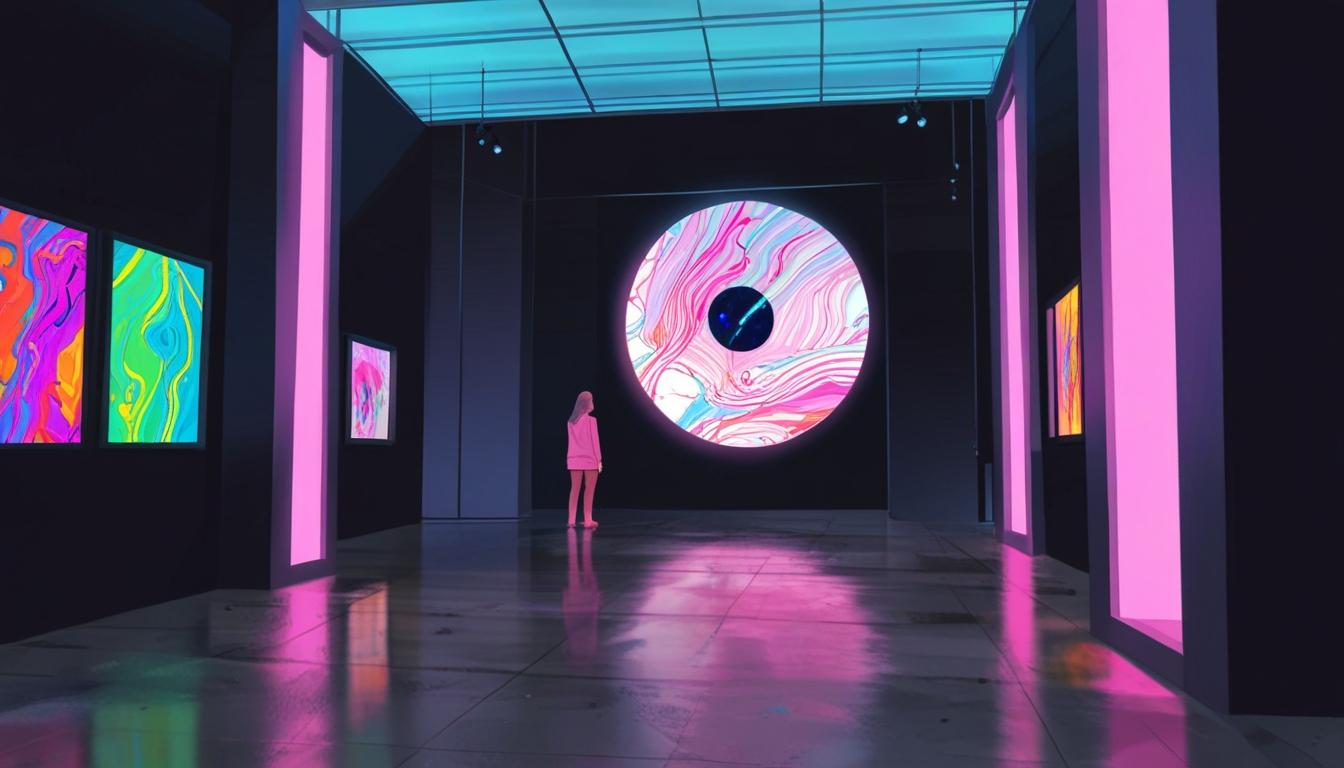AI has firmly established itself in the contemporary lexicon, recently recognised as the Word of the Year for 2023 by Collins Dictionary. The term’s rapid acceptance in the popular consciousness links deeply to significant technological advancements, such as the meteoric rise of ChatGPT, which became the fastest platform to gather a million users. Similarly, DALL-E's ability to generate stunning images instantaneously has captivated both the public and art collectors alike, stirring debates on the future of creativity and artistic expression.
Traditionally, the art world has been resistant to rapid technological changes, with a preference for time-honoured methods like painting and sculpture. The personal connections fostered in art advisory roles often overshadowed emerging digital innovations. However, a notable transformation is currently underway. Increasingly, artists are integrating AI into their creative practices, while collectors and galleries employ AI tools to inform their acquisitions, marking a significant shift towards a more data-driven art market.
The emergence of AI as a recognised medium within the art sphere has gained momentum since the rise of non-fungible tokens (NFTs), notably illustrated by Beeple’s “Everydays: The First 5000 Days,” which fetched an astounding $69.3 million at Sotheby’s in 2021. This sale not only broke records but also exemplified the shifting perspective towards digital art as a legitimate form of artistic expression. Auction houses like Christie’s and Sotheby’s have since begun to establish dedicated metaverse units, further solidifying the role of digital and AI-generated art in mainstream art markets.
Among the vanguard of AI artists, Refik Anadol has made a significant impact with works like “Machine Hallucinations: Unsupervised,” which was acquired by the Museum of Modern Art (MoMA) in late 2023. Anadol’s approach, which melds AI with machine learning to create visually captivating works from data, illustrates how technology can deepen our conceptual understanding of art. His installation at MoMA enchanted thousands, transforming raw data into beautiful visual abstractions, and offering a fresh take on how art can be produced and experienced.
Critics have offered varied opinions on the role of AI in artwork creation. While some, like renowned critic Jerry Saltz, have dismissed such works as lacking depth—referring to them as akin to “lava lamps”—others embrace the medium. Hans Ulrich Obrist has notably praised Anadol’s contributions, remarking that they vividly illustrate how the future of art is forged from fragments of past traditions. This duality of opinion encapsulates the broader debate within the art community regarding the merit and authenticity of AI-generated art.
Claire Silver stands as another pioneering figure in this domain, describing herself as an "AI collaborative artist". Her multifaceted approach, which combines text-to-image AI, digital collage, and conventional tools like Photoshop, has resulted in high-profile sales and partnerships with brands such as Gucci and Christie’s. Silver’s works, now housed in significant collections like LACMA, underscore the growing integration of AI as both a creative force and a business tool.
Moreover, the implications of AI extend beyond creation to encompass curation and art market analysis. Platforms like LiveArt are harnessing AI to assess and forecast the value of artworks, providing much-needed transparency in an often opaque market. This intelligence supports collectors and artists by delivering insights into pricing and the commercial potential of art, thus encouraging a more dynamic art ecosystem. As noted by Hugo Barclay, the founder of ArtThou, the rise of AI clearly signals a significant shift in the art market, fundamentally mirroring past challenges faced by emerging forms such as photography and print-making.
Nevertheless, as AI technology continues to evolve, questions linger about its future role in the art world. Will AI replace traditional artist assistants in studios? Will it become integral to sourcing new artworks and predicting trends? Could it even reshape how art criticism is approached in the digital age? Such inquiries hint at an intriguing yet complex future where human creativity and machine intelligence intertwine to redefine artistic practices.
This evolving dialogue regarding AI's impact on art not only highlights its potential as a valid medium but also challenges long-standing beliefs about the nature of creativity itself. As the boundaries between human and machine-made art blur, the exploration of AI in creative spaces promises to forge new paths, ultimately reshaping our understanding of art in the 21st century.
Reference Map
- Paragraphs 1-3: (1), (2)
- Paragraphs 4-5: (1), (3), (4)
- Paragraph 6: (1), (5)
- Paragraph 7: (1), (6)
- Paragraphs 8-9: (1), (7)
- Paragraph 10: (1), (5)
- Paragraph 11: (1)
Source: Noah Wire Services
